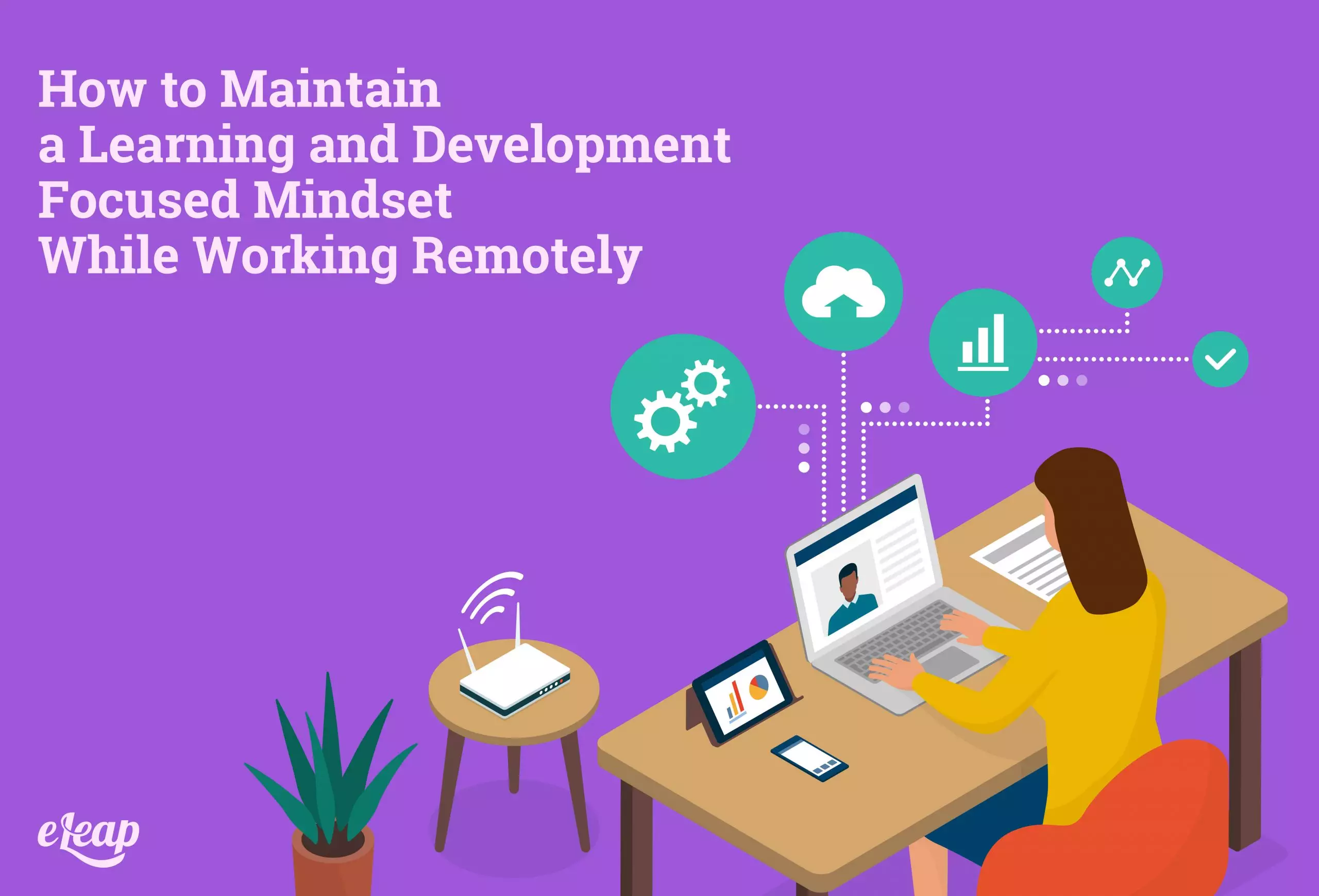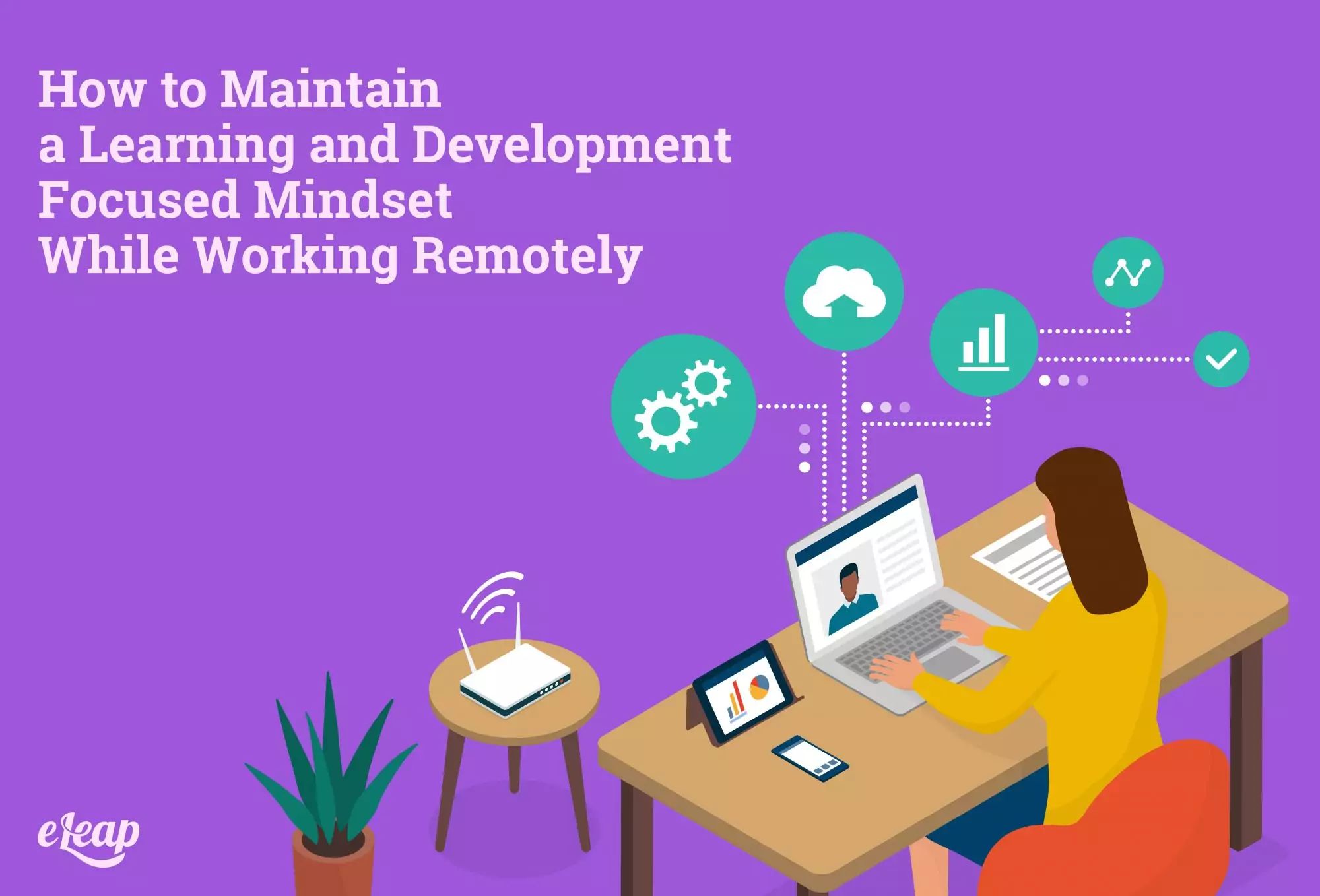How to Maintain a Learning and Development Focused Mindset While Working Remotely

It’s tough to maintain a mindset focused on learning and development in a socially distanced, remote-work world. It’s much easier to feel disconnected, cut-off, and alone. For leaders, managers, and decision-makers, that’s a terrible situation in which to find yourself.
However, it doesn’t have to be your truth. There are ways to ensure you’re able to focus on learning and growth even while you’re working from home. In this post, we’ll explore some of the most important things to help you develop and then maintain that growth mindset.

The Right Mindset
First, let’s define the mindset we’re talking about. What do learning and development have to do with anything? What does “growth mindset” really mean? In a nutshell, it’s:
Understanding that abilities can be developed. Anyone can develop them.
That’s it. It’s not particularly complicated. You simply believe, in your core, that abilities can be developed over time and through effort. No, they don’t magically manifest, but that’s part of the beauty. After all, if you were suddenly imbued with new capabilities, chances are good that you wouldn’t value them as much as if you had to put in effort over time to build them up.
Without this belief, you won’t be able to grow and develop under normal circumstances, much less during a unique period like the pandemic we’re currently facing. Of course, this begs the question of how you create that mindset in the first place. How do you build that belief in yourself that abilities can be developed?
Be Your Own Architect
The first step in developing the mindset you’ll need is to believe that you can do it. If you can’t see yourself believing that everyone around you can develop abilities, then you won’t be able to achieve the right mindset. In fact, you’ll likely be ineffective as a leader in the first place.
Next, get comfortable with leading and managing from a distance. While you do have technology that can approximate in-office communications, it’s never going to be identical. You may need to remember a few things, including the following:
- Most human communication is nonverbal, so emails, texts, and chats don’t carry the same weight and can be misconstrued.
- Video conferencing is the best way to ensure clarity, but some team members might prefer to mute their cameras. Be okay with that.
- Understand that your team still needs access to learning and development materials, so make sure they’re available without any hurdles or challenges.
Presence
You need to have the same presence over video as you do in the office. That means more than “being present”. You need to commit to showing your true presence. Of course, that can be tough to do when you’re at home and so are your team members. These tips can help:
- Find a quiet place to have your meetings. You should ideally have a dedicated workspace, but barring that, you do need dedicated space where you can engage with your teams without worrying about interruptions or distractions. Sure, your team will understand – they’re dealing with the same situation – but it affects your presence, and your ability to focus.
- Focus on video conferencing. Again, you need to approximate your physical presence as much as possible. Of course, using your camera means that you need to be presentable and look like a leader. Yes, that means you need to wear pants and make eye contact with your team (focus on the camera, not on the computer screen).
Promote Learning and Development
While you need to focus on encouraging team members to fulfill their regular responsibilities, you also need to make clear that they have an amazing opportunity right now. With distance learning, employees likely have more free time. They can and should use that time to their personal and professional advantage by completing learning and development courses.
With that being said, you may need to sell them on this. To do that, you’ll need to make sure that they understand the relevance of the training to them personally and professionally. They also need to understand the endgame – what does completing the training do for them?
You can do that in a couple of ways, but the most important is to have a career path plotted out. This allows employees to look at each step along the path and understand how it correlates to their future. It also helps them understand what comes next when they complete a module or course.
Combine L&D and Performance Management
Performance management will need to continue even while everyone is working remotely. This actually provides a simple way to promote a growth mindset. Combine learning and development progression talks with your regular check-ins and coaching efforts. Tie it into improvement plans, and make sure that each team member understands who upskilling can improve their performance while also moving the company forward.
Foster a Sense of Purpose
Finally, you need to foster a sense of purpose. Learning and development without any underlying purpose won’t go far, even if you’re able to make it relevant and compelling for your team members. This is perhaps the simplest to accomplish, though, as you can tie it in with your company’s purpose and mission.
Bringing It All Together
Maintaining a learning and development-focused mindset can be challenging. The first step is to commit to developing it in the first place. Next, you need to ensure that you’re able to lead effectively from in a remote-work environment.
Become an advocate for learning and development and help your team members understand the value upskilling offers them and the relevance of course content to their professional and personal development. Finally, make L&D part of performance management, and then foster a sense of purpose by tying everything into your company’s mission. With the right mindset and a little dedication, you can keep your team focused on growth and learning.